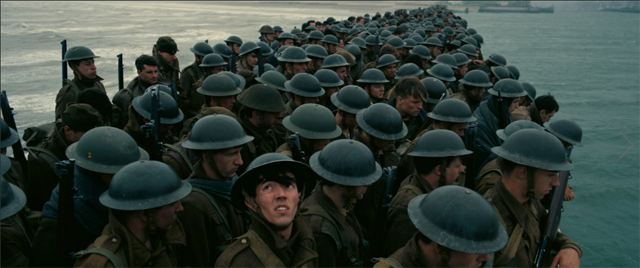Column: From ‘Dunkirk’ to Charlottesville — all in one weekend

Last weekend, my wife and I saw “Dunkirk,” a movie about an extraordinary time in history when German armies pushed all the way to the English Channel in their conquest of France and the Low Countries. Hundreds of thousands of English and French troops were surrounded, their backs against the Channel.
To save them — and save Great Britain from what was believed to be a certain German invasion — tens of thousands of private fishing and pleasure boats ferried the troops from the port city of Dunkirk to safety on the English coast.
There have been few efforts in recent history more heroic this one, when ordinary citizens risked their own lives to save their troops and their country from a German juggernaut that had quickly conquered Europe.
Western democracy was crushed by the Nazis that spring of 1940. France surrendered in June of that year and would remain an occupied country until the summer of 1944. To celebrate his triumph, Hitler flew to Paris. A year later, German troops invaded Russia, and an industrialized, government-run extermination program began.
Fast-forward to last weekend, when black-shirted neo-Nazis carrying tiki torches purchased at the home supply store marched and rioted in Charlottesville, Va. An avowed admirer of Hitler was charged with murder for mowing down a counter-protester with his car.
From “Dunkirk” to Charlottesville. All in one weekend.
I suppose it would be easy to classify the neo-Nazis at the protest as naive and ignorant of history, even history as recent as the German war against civilization from 1939 to 1945. But that would be giving them a pass they don’t deserve. Stupidity may be a defense for some things, such as why you forgot to turn on the stove to cook dinner, but certainly not this.
If the gas chambers don’t stand out in your mind, if photographs of Jews — old people, women, children and babies — standing on train platforms at death camps don’t stand out in your mind, then somehow you are able to pretend those events never happened. You can live in your own truth.
Many thousands of Germans thought the Nazis when they first reared their ugly heads in the mid-1920s were nuts no one could possibly support. They would scream and shout and march down the boulevards and fade away. Then Hitler was appointed chancellor in January 1933. What seemed impossible at one time came to life at another time.
Parts of the American South have been roiling since a number of municipalities decided to remove statues of “heroes” of the war of 1861-1865 such as Robert E. Lee. A larger-than-life statue of Lee astride his horse is at the center of the chaos in Charlottesville.
Clearly, there is also confusion about American history and not just recent European history. The Civil War was fought over slavery. It was first about the westward expansion of slave states and then, with the war underway, about the institution of slavery existing at all in this green, clean land of America.
Near downtown Memphis there is a statue to a Confederate cavalry officer named Nathan Bedford Forrest. The statue was erected in 1905 as an “enduring monument” to Forrest. Before the war, Forrest was a slave trader. After the war was lost, he became an early member of the Ku Klux Klan, a group that was resurgent at the time the statue was erected. The Klan is now considered a domestic terror organization. Its members were also on display last weekend in Charlottesville.
We all have our heroes. In Memphis in 1905, Forrest was a hero to enough citizens to have a statue made in his honor. I was reminded of mine when we saw “Dunkirk,” with all the private citizens climbing aboard anything that would float to reach trapped soldiers in France and bring them to safety, so they could fight the menace of Nazism another day.
If you want to read about another group of heroes closer to home, study Joshua Lawrence Chamberlain’s successful stand on Little Round Top at Gettysburg on the second day of that epic battle. He and his men stopped wave after wave of Confederate troops who were trying to get behind Union lines.
Or take Main Road toward Southold hamlet. Just west of the business district, where the road curves at the American Legion post, stop and read the names on the Civil War statue there. Like Chamberlain, like the boat owners in the English Channel, those men saw a cause to fight for.
The World War II generation is fast dying off. I can imagine a 90-something-year-old man who maybe landed at Normandy, fought in the Battle of the Bulge and helped defeat the Nazis. I can imagine how he felt turning on the news last weekend and seeing Americans with their right arms stuck out in the Nazi salute.
Top photo credit: Warner Bros.
 The author is the executive editor of the Times Review Media Group. He can be reached at 631-354-8048 or [email protected]
The author is the executive editor of the Times Review Media Group. He can be reached at 631-354-8048 or [email protected]









